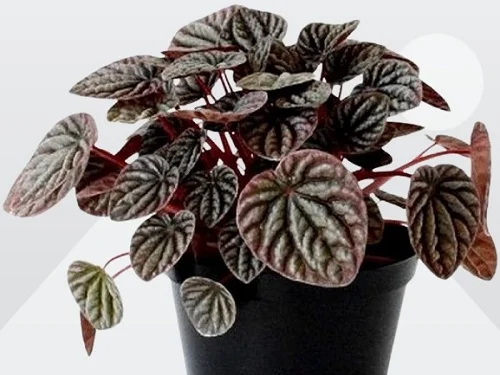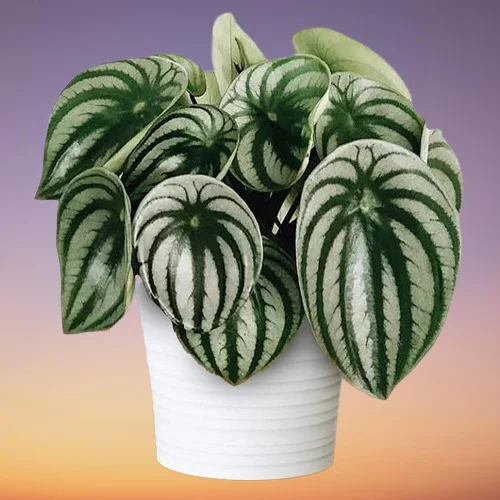14 Reasons for Why Peperomia Leaves are Drooping Leaves and Remedies
Some links in this post may be affiliate links
Peperomia drooping leaves are caused by improper feeding, too little light, dry air, incorrect watering, extreme temperatures, direct sunlight, pests, rot-rot among others.
Majority of Peperomia varieties are popular plants which easily adapt to a wide range of growing conditions. You are likely to find at least one in most plant lovers homes.
Generally, Peperomia grow best in medium to bright indirect light, warm and humid conditions, and moderately moist, rich, well-drained soil coupled with regular feeding in the growing season. Learn how to grow and care for Peperomia (Radiator Plants).
If the growing conditions are not right, Peperomias will develop some problems. Wilting and droopy leaves is a common problem where the leaves lose their turgidy (stiffness), wilt and droop downwards.
The reasons for Peperomia droopy leaves are many and varied. We have herebelow outlined for you 14 of them together with their remedies.
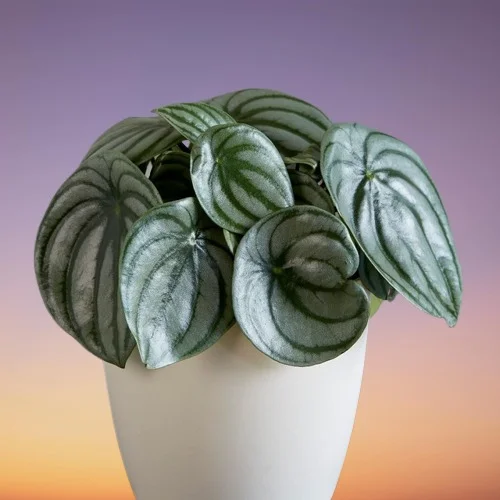
14 Reasons why Peperomia leaves are wilting and drooping
1. Underfeeding
Underfeeding implies that the Peperomia plant is not getting the nutrients need for growth and energy. Lack of nutrients in the actively growing tips causes nutrients to be withdrawn from the older lower leaves resulting in wilting and drooping.
Solutions
Feed your Peperomia at least once monthly in spring and summer with a balanced, liquid fertilizer. Ensure to follow the instructions on the label of the plant food.
2. Overfeeding
On the other hand, overfeeding will cause the roots to die due to fertilizer burn. This implies that the roots cannot take up water and nutrients to the leaves. Due to dehydration, the leaves begin to wilt and droop.
Solutions
Take care not to overfeed your Peperomia. Follow the instructions on the label of the plant food to avoid overfeeding.
Regularly flush out the salts from the soil by running a stream of water through the soil until it comes out through the drainage holes and repeat the process several times.
3. Dry Air
Peperomia will grow in ordinary room humidity but too dry air will lead to dehydration of the leaves, causing them to lose their turgidity which results in wilting and drooping.
Solutions
Use a hygrometer to monitor the humidity to maintain it at 50-80% for the optimum growth of your Peperomia.
To increase humidity, set the pot on a wet pebble tray, use a cool mist humidifier or group the plants together.
You may also grow the plant in a well-lit bathroom, kitchen, laundy area and other moist areas in the home.
The compact Peperomias can be grown in a closed terrarium where a high humidity can be maintained.
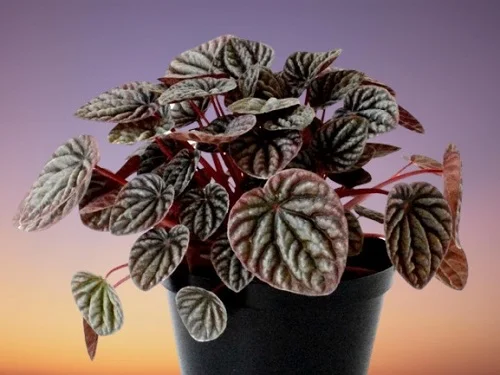
4. Poor Quality Soil
Poor quality soil does not drain well and easily becomes compacted or soggy which can lead to rotting, yellowing, wilting and drooping leaves and eventual death of the plant if not corrected.
Solutions
Pot your Peperomia in loose, airy, well-draining soil that is rich in organic matter. Cactus and succulents soils are ideal for the succulent Peperomias while all purpose potting mixes are good for non-succulent varieties.
5. Too Little Light
Adequate light is needed to make food that is required for energy and growth. Insufficient light implies that the plant cannot make enough food for energy and growth.
Therefore, in an attempt to save energy for the vital functions, the plant begins to die which starts from the leaves; they begin wilting, drooping, yellowing, browning and eventually fall off.
Solutions
Cut back the stems to rejuvenate growth.
Move your Peperomia to a brighter spot where it will receive medium to bright indirect light or instal a full spectrum grow light if you do not have adequate lighting in your home.
Regularly clean the leaves by damp wiping with a soft cloth to ensure that the plant absorbs enough light for photosynthesis.
6. Extremely Hot Temperatures
Extreme hot temperatures caused by hot drafts will cause excessive loss of water from the leaves which leads to wilting and droopy leaves.
Solutions
Keep your Peperomia Plant away from sources of hot drafts like hot surfaces, hot vents, stoves and other hot areas to maintain an average warmth of 15-260C. Usually, a room temperature that is comfortable for you is ideal for the plant.
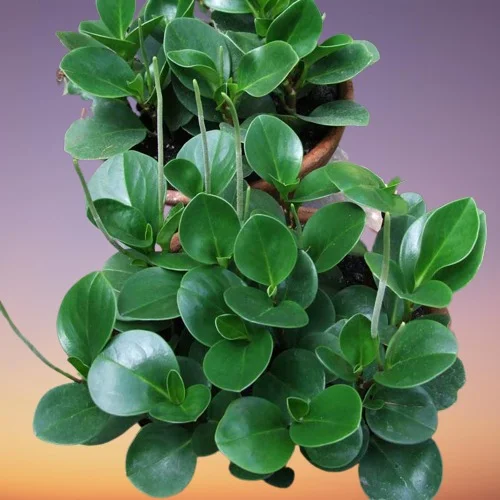
7. Underwatering
Underwatering your Peperomia implies that there is too little moisture in the soil. As such, there is no water in the soil for the plant to take up to the leaves and other parts. Therefore, the leaves lose their turgity, become floopy and droopy.
Solutions
Thoroughly water the plant immediately and it should perk up.
Thereafter, water the plant when the top few inches of soil feel dry but do not allow the soil to dry out completely.
8. Overwatering
Overwatering results in excess water in the soil leading to soggy soil. Too much water in the soil reduces the oxygen concentration in rootzone causing the roots to die. Therefore, the roots cannot take up water to the stems and leaves which lose their turgidy (firmness) resulting in wilting and drooping.
Solutions
Grow your Peperomia in a pot with a drainage hole and loose and free-draining soil.
Do not water on a schedule. Keep the soil moist in spring and summer and slightly moist in fall and winter.
9. Salts buildup
Since plant roots absorb water by osmosis, excess salts in the soil from the water used or excess feeding will stop the roots from taking up water to the leaves and stems resulting in wilting and drooping.
Solutions
Regularly, leach out excess salts from the soil by running a stream of water through the soil until it comes out through the drainage holes. Repeat the process several times.
10. Pest Infestations
Peperomia are prone to spider mites, whiteflies, scale insects and mealybugs. These pests attack the new growth from where they suck the plant sap. This causes the plant to become dehydrated and results in wilting and drooping leaves.
Solutions
Regularly, inspect your Peperomia for these pests and take timely control measures. Treat the plant for the pests with neem Oil or insecticidal soap as per the manufacturers' recommendations.
To discourage pests infestations, regularly clean the leaves by damp-wiping with a soft cloth.
Elevate humidity to depress the pest infestations, by setting the pot on a wet pebble tray or use of a humidifier.
Keep the plant well prune and improve air circulation to reduce infestations.
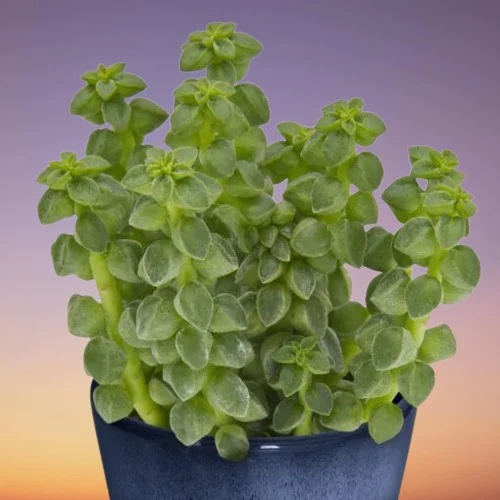
11. Root-rot Disease
Peperomia plants are prone to root-rot which is prevalent in soggy soil. The disease is characterized by wilted, discolored leaves, corky swellings under the leaves, wilting and drooping leaves which eventually drop.
Solutions
Carefully slip the Peperomia out of its pot and inspect the roots. Brown-black, mushy roots indicate root-rot, trim them off.
Treat the healthy roots with a fungicidal solution as per the manufacturer's instructions.
Disinfect the pot with the fundicidal solution or use a fresh pot to repot the plant in fresh free-draining soil.
Do not water the plant immediately; keep it dry for some time before resuming watering.
12. Being Root-bound
If your Peperomia plant is root-bound, the roots have filled the pot and there is very little soil to hold water when you water. Therefore, there is no water for the plant to take up to the leaves. The leaves become dehydrated and begin to wilt and droop.
Solutions
Check the bottom of the pot, roots growing through the drainage hole indicate that the plant needs repotting.
Repot your Peperomia into a pot one size larger with a drainage hole and well-draining soil.
You may divide the large plant into several sections and pot the sections in individual pots to propagate new plants.
13. Repotting Shock
Repotting your Peperomia will cause it some shock which may lead to some leaves wilting and drooping before it can adjust the new growing conditions.
Solutions
To minimize repotting shock, water your Peperomia thoroughly one day before repotting; a well hydrated plant experiences less shock and is easier to divide.
In addition, do not make too many changes at once. For instance, after repotting, maintain the plant in the same location until it is well established before moving it to a new location.
14. Direct Sunlight
Direct sunlight on Peperomia leaves will cause drastic water loss. This will in turn cause the leaves to loose their firmness which will lead to wilting and drooping.
Solutions
Thoroughly water the Peperomia immediately and it should recover.
Move the plant to a more shaded spot or instal a light curtain to prevent direct sunlight from reaching the leaves.
You liked it? Share on social media.
Related Content
Amazon Associates Disclosure
Homeplantsguide.com is a participant in the Amazon Services LLC Associates Program, an affiliate advertising program designed to provide a means for sites to earn advertising fees by advertising and linking to amazon.com.



